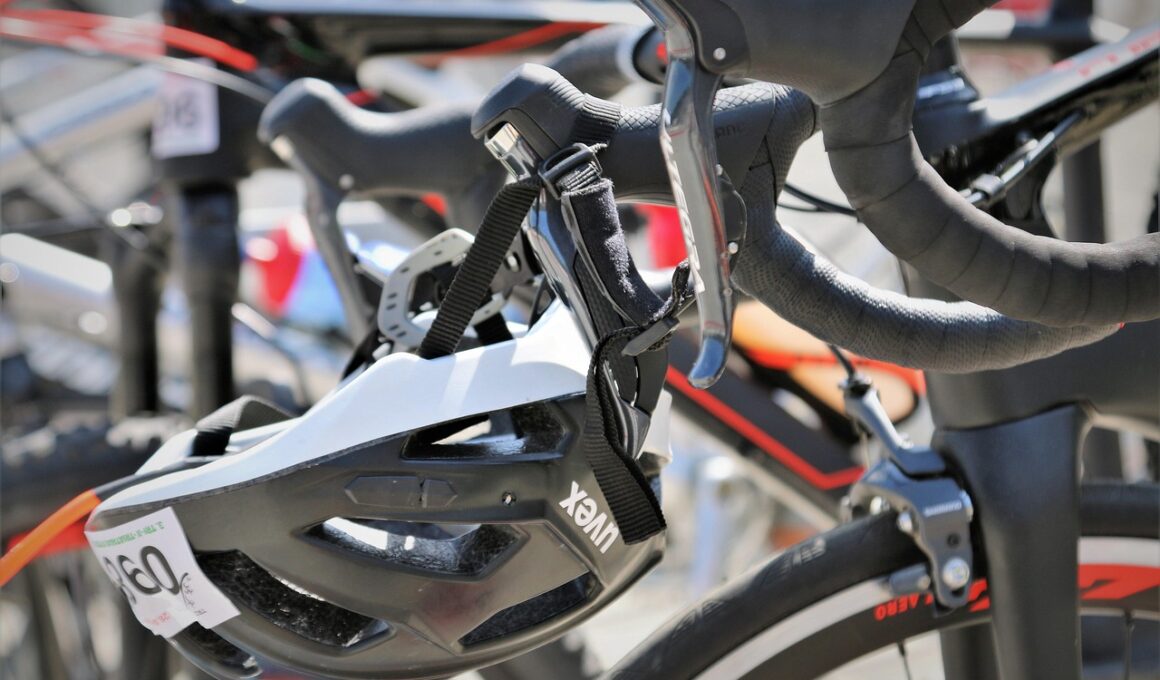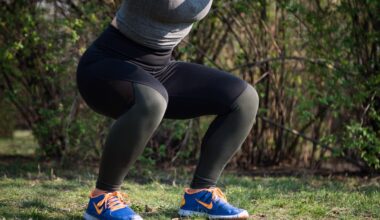Essential Gear for Triathlon Water Events: What You Need to Know
Participating in triathlon water events requires specialized gear to ensure not only performance enhancement but also safety during the swim segment. A well-planned gear list can make a significant difference in your race experience. One of the primary necessities is a quality wetsuit, which provides buoyancy, warmth, and protection. When choosing a wetsuit, look for the right thickness and fit to maximize your comfort in the water. Additionally, consider the type of event you are racing in, as this may influence your wetsuit choice. Beyond a wetsuit, you will need swim goggles that provide clarity and comfort. They should fit securely to prevent water from entering while allowing good visibility. Products with anti-fog and UV protection features are highly recommended. Lastly, a reliable swim cap will help minimize drag and keep your hair out of your face. Remember to check local regulations, as some races may have restrictions on wetsuit usage based on water temperature. Taking the time to select the right gear ensures a smoother swim experience, helping you transition confidently to the cycling phase.
Another vital component of your triathlon gear is ensuring you have the right swim accessories. These include buoys and floatation devices that can be crucial for training. The use of a swim buoy can provide visibility during open water swims, essential for safety if you are swimming in a busy area or a poorly marked course. Additionally, using pull buoys can greatly enhance your stroke technique and build upper body strength. They allow swimmers to focus on arm techniques without kicking, creating a temporary buoyancy that aids training specific areas without strain. You might also consider hand paddles for strength training, which increase resistance and help in developing more powerful strokes. Finishing off your swim gear checklist, investing in a good pair of swim socks or booties is advisable for colder conditions, providing warmth and protection against rough terrains during the exit from the water. Finally, do not forget to pack sunscreen to protect your skin before entering any open water, as prolonged sun exposure during events can be damaging. This involvement of careful considerations can significantly influence your overall performance.
Optimal Nutrition and Hydration
Nutrition plays a vital role in preparing for any triathlon event, particularly for the swim segment. Hydration must commence a few days ahead of the competition; therefore, it is very important to properly hydrate before the race. Aim for a balanced diet that emphasizes carbohydrates to fuel your muscles, lean proteins, and healthy fats. Consider high-quality energy gels or chews specifically designed for triathletes. Consuming these during your race can provide the quick energy needed for a strong performance. Plan your pre-swim meal carefully; it should be easily digestible and rich in carbs. Granola bars or a banana can serve as a wonderful option. However, timing is crucial; an ideal window is 30 to 60 minutes before your start. Traveling for races also means you must manage your meal planning accordingly. Familiar foods may not always be available, so bring some non-perishable snacks to maintain your energy levels. Carbs aren’t only for your meals – during the race, keep quick sources of carbs on hand to prevent energy drops. Lastly, after swimming, seamlessly transition to rehydrate during the cycling leg to keep your energy levels stable.
The transition from swimming to biking can be challenging without the right gear. Preparing your transition area properly can minimize time lost during the changeover. Organize your bicycle, helmet, bib number, and shoes in a manner that allows for swiftly moving from one activity to the next. A triathlon belt is helpful for keeping your bib number secure without needing to pin it each time. This is a convenience advisable for a seamless transition. To further quicken your transition, consider investing in tri-specific footwear that allows for quick entry. These quick-lace shoes improve your efficiency and save precious seconds. Additionally, many athletes use a hydration pack or water bottle strategically placed on their bike for easy access when cycling. It is also advisable to practice transitions during your training to get the hang of it before the actual event. Understanding your sequence will help refine speed and minimize confusion when racing. Regular practice can lead to improved confidence and performance under pressure during competition days, helping you to complete all transitions smoothly and swiftly.
Understanding the Rules and Regulations
Every triathlon event comes with its own established rules and regulations that all athletes must follow. Familiarizing yourself with these rules is essential for not only having a fair competition but also for ensuring your safety. Rules typically pertain to equipment specifications, transition protocols, and the use of personal flotation devices. Many events disallow devices such as fins or paddles during competition. Therefore, read the event’s athlete guide carefully, which outlines the do’s and don’ts that you need to adhere to. Another critical element is understanding the course layout and any specific segments that require special attention, such as marked buoys for navigation. Moreover, attending the pre-race briefing will help clarify any points of confusion. It also provides an opportunity to ask questions about the course and receive tips from experienced competitors. Finally, knowing the penalties for various infractions will help you avoid disqualifications. Being informed creates an enjoyable environment not only for you but for fellow competitors, increasing race enjoyment and ensuring that all participants can compete at their best abilities and skills.
Your mental preparation is equally important when gearing up for triathlon water events. As much as physical gear is necessary, a strong mental game can often be the winning factor. Visualization techniques can be effective; mentally rehearsing your swim, transition, and subsequent bike leg can build confidence and clarity. Many athletes utilize specific times dedicated to focusing solely on the race day environment through visualization. Before entering the water, take a moment to breathe deeply, focusing solely on making that initial plunge into the water. Recognize that nerves are normal, and channel that energy into a concentrated effort during the swim. Moreover, having a plan in case things do not go as expected will help ease anxiety. Whether it involves navigating triathlon choke points or dealing with unexpected tides, maintaining a flexible mindset can help you focus better during crucial moments. Utilize pre-race rituals like music playlists or pre-event meditation to help set the right mental atmosphere. Do not underestimate the importance of mental fitness paired with physical preparedness as a significant contributor to success. Consciously preparing will help a great deal during race time.
Post-Race Recovery Essentials
Post-race recovery cannot be overlooked; it is a vital component of your triathlon training cycle and general health. After the demanding swim, bike, and run segments, your body will need adequate time to recover. Start by replenishing fluids lost during the race; hydrating with water and electrolyte drinks can be beneficial. Refueling with a balanced meal high in protein and carbohydrates within two hours post-race contributes to muscle repair and recovery. Focus on nutrient-rich foods that will aid in rebuilding glycogen stores, helping you bounce back. Additionally, incorporating gentle stretching or yoga can improve circulation and reduce muscle stiffness. Consider investing in compression gear to wear during your cooldown; this helps mitigate soreness and speed up recovery times. Lastly, allow your body enough rest—schedule lighter training sessions in the days following your event. Emphasizing rest can make a significant difference in your post-race recovery. In summary, a well-structured recovery plan pairs with careful attention to nutrition and hydration to ensure you’re ready for your next challenge. Proper recovery supports your body from wear and tear, preparing you for future races.
In conclusion, participating in triathlon water events requires a blend of the right gear, nutrition, and mental preparation. When you equip yourself with a proper wetsuit and essential swim accessories, you are set to tackle open water with confidence. Regular practices on transitions and staying informed about race rules can bolster your overall performance. Cultivating a strong mental edge through visualization and focused breathing plays a crucial role on race day. Moreover, remember that recovery is equally important—optimal post-race care ensures that your body can recover and adapt, helping you bounce back for future events. The supportive community of fellow triathletes also adds to the experience, where sharing tips and stories can enhance your journey. Each event serves as a valuable learning experience, building both physical and mental resilience. So, embrace the fun and challenge of triathlon water events and ensure you are fully prepared to enjoy every moment, both in training and on race day. Lastly, keep pushing your limits to improve, and don’t forget to celebrate the achievements, big and small, along the way!


